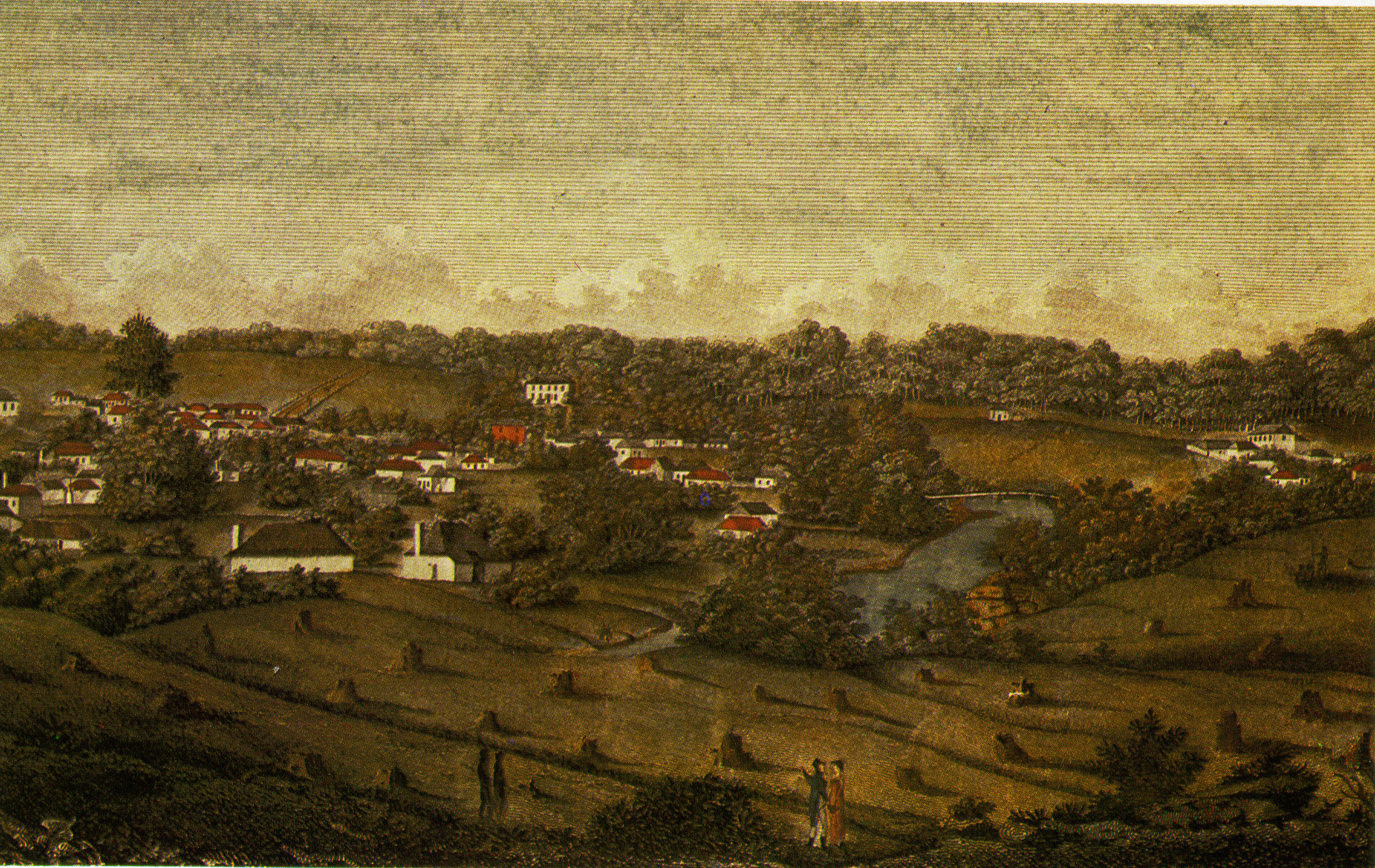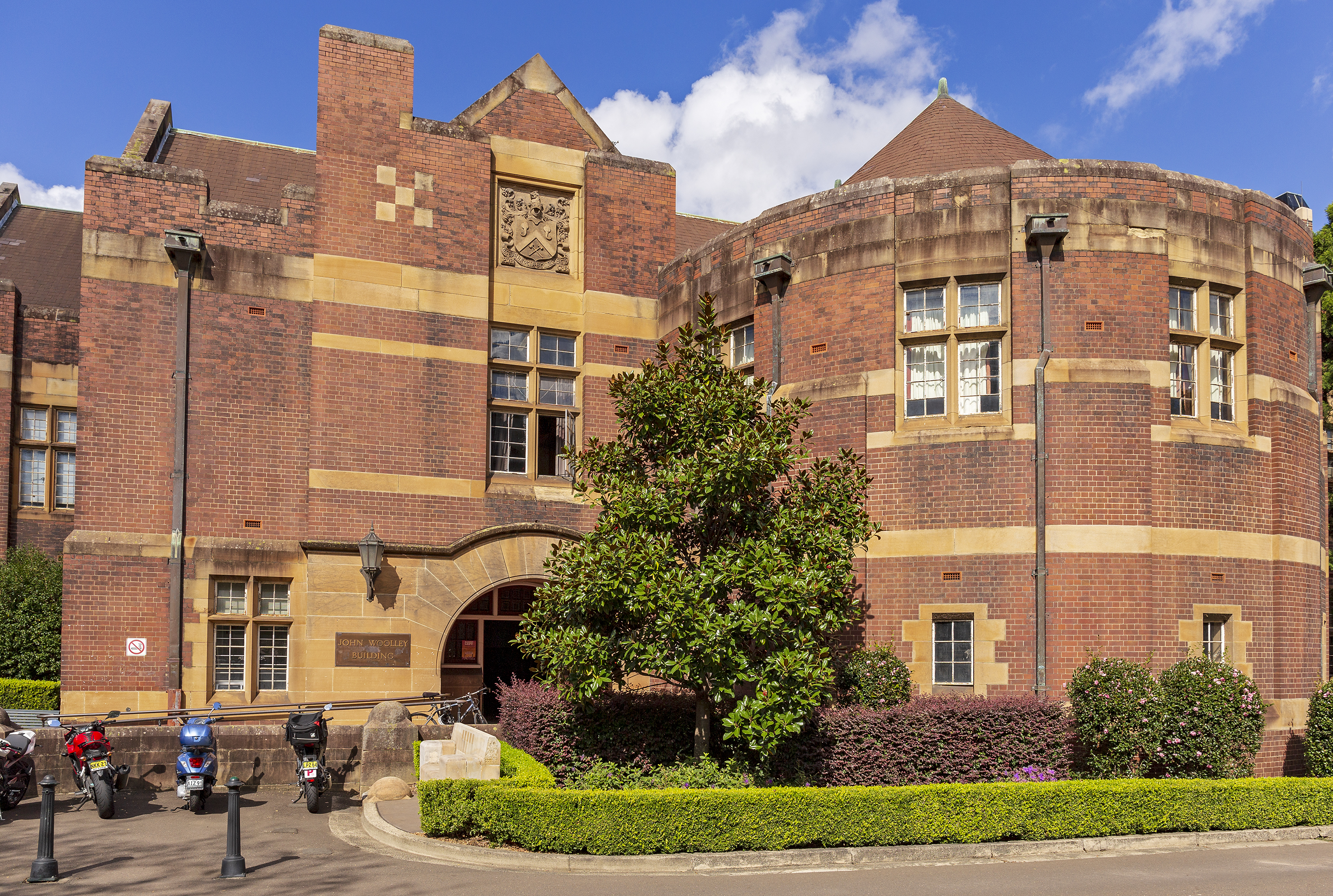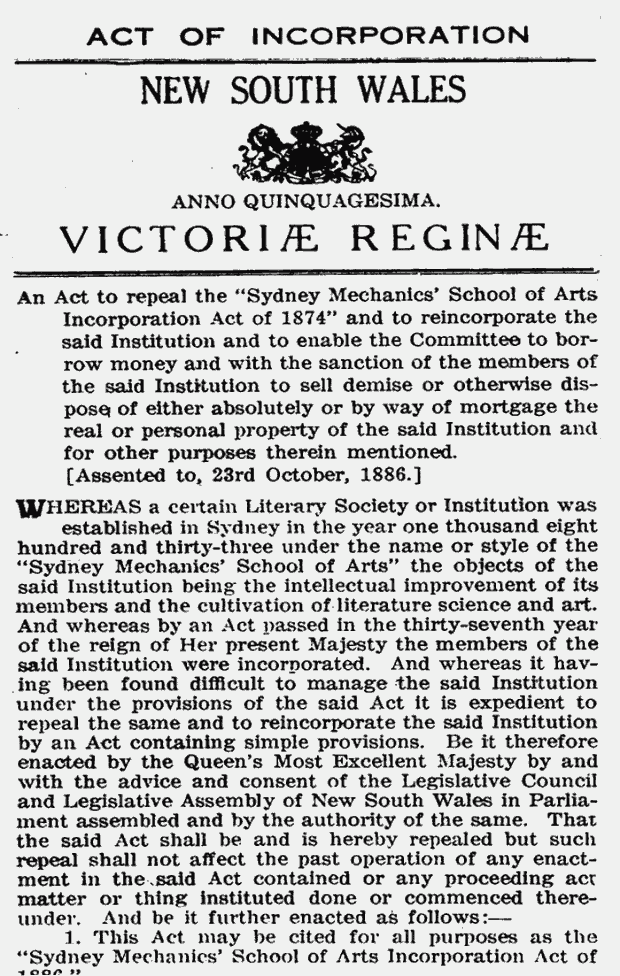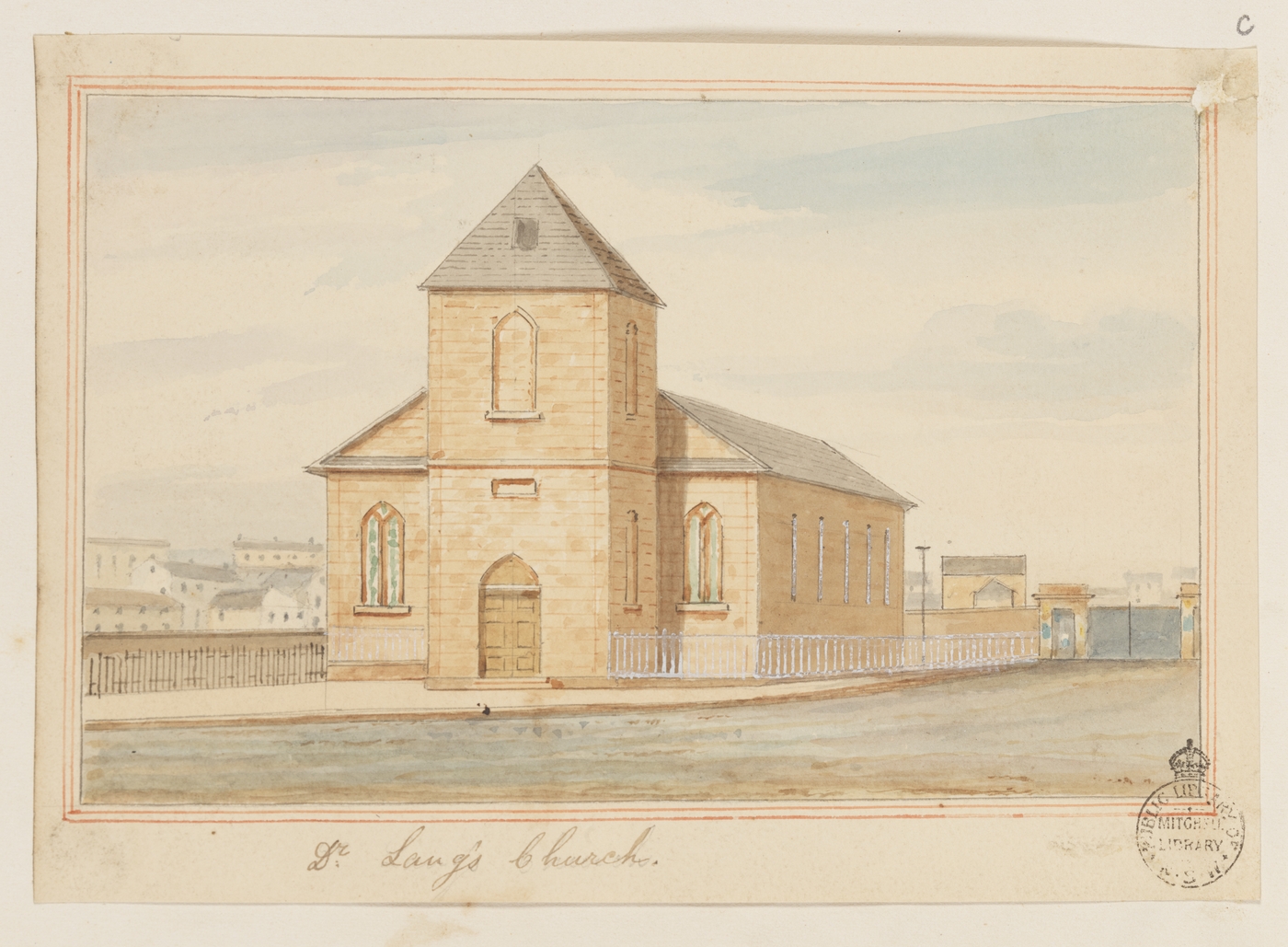|
Railway Institute Building
Railway Institute Building is a heritage-listed former educational facility and social venue at 101 Chalmers Street, Surry Hills, City of Sydney, New South Wales, Australia. It was built from 1891 to 1898. It is also known as Institute Building. It was added to the New South Wales State Heritage Register on 2 April 1999. History Early history of the locality In the early years of the nineteenth century the area around what is now Prince Alfred Park and the infrastructure of Central railway station was undeveloped land known as the Government Paddocks. Amongst the early grants in this locality were those made to Charles Smith which consisted of straddling what is now Chalmers Street and was roughly bounded by the present day Cleveland and Elizabeth Streets, and the large grant made to William Redfern. Smith's grant was known as Cleveland Gardens, and by the early 1820s it was owned by the merchant Daniel Cooper. Cooper erected Cleveland House, which still stands, in 182 ... [...More Info...] [...Related Items...] OR: [Wikipedia] [Google] [Baidu] |
Surry Hills, New South Wales
Surry Hills is an inner-city suburb of Sydney, in the state of New South Wales, Australia. Surry Hills is immediately south-east of the Sydney central business district in the local government area of the City of Sydney. Surry Hills is surrounded by the suburbs of Darlinghurst to the north, Chippendale and Haymarket to the west, Moore Park and Paddington to the east and Redfern to the south. It is often colloquially referred to as "Surry". It is bordered by Elizabeth Street and Chalmers Street to the west, Cleveland Street to the south, South Dowling Street to the east, and Oxford Street to the north. Crown Street is a main thoroughfare through the suburb with numerous restaurants, pubs and bars. Central is a locality in the north-west of the suburb around Central station. Prince Alfred Park is located nearby. Strawberry Hills is a locality around Cleveland and Elizabeth Streets and Brickfield Hill to the east of that. A multicultural suburb, Surry Hills has had a long ... [...More Info...] [...Related Items...] OR: [Wikipedia] [Google] [Baidu] |
Parramatta
Parramatta () is a suburb and major Central business district, commercial centre in Greater Western Sydney, located in the state of New South Wales, Australia. It is located approximately west of the Sydney central business district on the banks of the Parramatta River. Parramatta is the administrative seat of the Local government areas of New South Wales, local government area of the City of Parramatta and is often regarded as the main business district of Greater Western Sydney. Parramatta also has a long history as a second administrative centre in the Sydney metropolitan region, playing host to a number of state government departments as well as state and federal courts. It is often colloquially referred to as "Parra". Parramatta, founded as a British settlement in 1788, the same year as Sydney, is the oldest inland European settlement in Australia and is the economic centre of Greater Western Sydney. Since 2000, government agencies such as the New South Wales Police Force ... [...More Info...] [...Related Items...] OR: [Wikipedia] [Google] [Baidu] |
John Woolley (educator)
John Woolley (28 February 1816 – 11 January 1866) was an academic and clergyman, the first principal of the University of Sydney, Australia.K. J. Cable,Woolley, John (1816–1866), ''Australian Dictionary of Biography'', Volume 6, Melbourne University Press, 1976, pp 435–437. Retrieved 21 March 2010 Early life Woolley was born at Petersfield, Hampshire, England, the second son of George Woolley, physician, and his wife Charlotte, ''née'' Gell. Woolley attended Western Grammar School, Brompton, London and then the University College, London from 1830, and during the next two years passed every subject he took with first-class honours. Woolley then won an open scholarship at Exeter College, Oxford, graduating BA, 1836, with a first-class in classics, MA, 1839, and DCL in 1844. Woolley was ordained a deacon on 14 June 1840 and a priest on 4 July 1841. In 1840 Woolley published ''An Introduction to Logic''. In 1842 he was appointed headmaster of Edward the Sixth's Grammar Sch ... [...More Info...] [...Related Items...] OR: [Wikipedia] [Google] [Baidu] |
Pitt Street
Pitt Street is a major street in the Sydney central business district in New South Wales, Australia. The street runs through the entire city centre from Circular Quay in the north to Waterloo, although today's street is in two disjointed sections after a substantial stretch of it was removed to make way for Sydney's Central railway station. Pitt Street is well known for the pedestrian only retail centre of Pitt Street Mall, a section of the street which runs from King Street to Market Street. Pitt Street is a one way (southbound only) from Circular Quay to Pitt Street Mall and (northbound only) from Pitt Street Mall to Goulburn Street, while Pitt Street Mall is for pedestrians only. It is dominated by retail and commercial office space. History Pitt Street was originally named Pitt Row, and is one of the earliest named streets in Sydney. Pitt Street is believed to have been named by Governor Arthur Phillip in honour of William Pitt the Younger, at the time, the Prime Min ... [...More Info...] [...Related Items...] OR: [Wikipedia] [Google] [Baidu] |
Sydney Mechanics' School Of Arts
The Sydney Mechanics' School of Arts (SMSA) is the longest running School of Arts (also known as a " Mechanics' Institute") and the oldest continuous lending library in Australia. Founded in 1833, the school counted many of the colony's educated elite as members, and quickly positioned itself as a centre for social change and intellectual life of the city of Sydney with a program of public lectures, courses, lending library and other activities based on its mission of adult education. Now in new premises, the SMSA continues to offer public education programs and grants today. In 2011 the SMSA opened ''The Tom Keneally Centre'', which holds the research collection of world-renowned author Thomas Keneally from his private collection and memorabilia. History By the early 1830s, Sydney Town had come a long way from its origins as a convict colony four decades earlier and free settlers were increasing in numbers. John Dunmore Lang wished to build an Australian College in Sydney ... [...More Info...] [...Related Items...] OR: [Wikipedia] [Google] [Baidu] |
Richard Bourke
General Sir Richard Bourke, KCB (4 May 1777 – 12 August 1855), was an Irish-born British Army officer who served as Governor of New South Wales from 1831 to 1837. As a lifelong Whig (Liberal), he encouraged the emancipation of convicts and helped bring forward the ending of penal transportation to Australia. In this, he faced strong opposition from the landlord establishment and its press. He approved a new settlement on the Yarra River, and named it Melbourne, in honour of the incumbent British prime minister, Lord Melbourne. Early life and career Born in Dublin, Ireland, Bourke was educated at Westminster and read law at Christ Church, Oxford. He was a cousin of Edmund Burke and spent school and university holidays at Burke's home, and thus acquired some influential friends. He joined the British Army as an ensign in the Grenadier Guards on 22 November 1798, serving in the Netherlands with the Duke of York before a posting in South America in 1807, where he participated ... [...More Info...] [...Related Items...] OR: [Wikipedia] [Google] [Baidu] |
John Dunmore Lang
John Dunmore Lang (25 August 1799 – 8 August 1878) was a Scottish-born Australian Presbyterian minister, writer, historian, politician and activist. He was the first prominent advocate of an independent Australian nation and of Australian republicanism. Background and family Lang was born near Greenock, Renfrewshire (now Inverclyde), Scotland, the eldest son of William Lang and Mary Dunmore. His father was a small landowner and his mother a pious Presbyterian, who dedicated her son to the Church of Scotland ministry from an early age. He grew up in nearby Largs and was educated at the school there and at the University of Glasgow, where he excelled, winning many prizes and graduating as a Master of Arts in 1820. Stevenson McGill was his most influential teacher; he also greatly admired Thomas Chalmers. His brother, George, had found employment in New South Wales and Lang decided to join him. He was ordained by the Presbytery of Irvine on 30 September 1822. Arriving in Sydney ... [...More Info...] [...Related Items...] OR: [Wikipedia] [Google] [Baidu] |
Alfred, Duke Of Saxe-Coburg And Gotha
Alfred (Alfred Ernest Albert; 6 August 184430 July 1900) was the sovereign duke of Saxe-Coburg and Gotha from 1893 to 1900. He was the second son and fourth child of Queen Victoria and Prince Albert. He was known as the Duke of Edinburgh from 1866 until he succeeded his paternal uncle Ernest II as the reigning Duke of Saxe-Coburg and Gotha in the German Empire. Early life Prince Alfred was born on 6 August 1844 at Windsor Castle to the reigning British monarch, Queen Victoria, and her husband, Prince Albert, the second son of Ernest I, Duke of Saxe-Coburg and Gotha. Nicknamed Affie, he was second in the line of succession to the British throne behind his elder brother, the Prince of Wales. Alfred was baptised by the Archbishop of Canterbury, William Howley, at the Private Chapel in Windsor Castle on 6 September 1844. His godparents were his mother's first cousin, Prince George of Cambridge (represented by his father, the Duke of Cambridge); his paternal aunt, the Duchess of ... [...More Info...] [...Related Items...] OR: [Wikipedia] [Google] [Baidu] |
Main Suburban Railway Line
The Main Suburban railway line is the technical name for the trunk railway line between Redfern railway station and Parramatta railway station in Sydney, Australia, but now generally refers to the section between Redfern and where the Old Main South Line branches off at Granville Junction. The railway line then continues on as the Main Western line towards the Blue Mountains. This term distinguished this trunk line from the Illawarra Line which branched south from the Illawarra Junction to Wollongong, and later the North Shore tracks which carried trains north over the Harbour Bridge. History The Main Suburban line between Redfern and Granville was the first railway line to be constructed in New South Wales. The first company to start rail transport in New South Wales was the Sydney Railway Company which was incorporated on 10 October 1849 with the aim of building a railway from Sydney to Parramatta. Capital was raised, shares were sold, and a route was surveyed. The first ... [...More Info...] [...Related Items...] OR: [Wikipedia] [Google] [Baidu] |
Stewart, New South Wales
Stewart, is a remote civil parish of Poole County in far North West New South Wales. . Stewart is located 10 miles south of Cameron's Corner. The , of the is mostly the flat, landscape of the |
Charles Augustus FitzRoy
Sir Charles Augustus FitzRoy, (10 June 179616 February 1858) was a British military officer, politician and member of the aristocracy, who held governorships in several British colonies during the 19th century. Family and peerage Charles was born in Derbyshire England, the eldest son of General Lord Charles FitzRoy and Frances Mundy. His grandfather, Augustus FitzRoy, 3rd Duke of Grafton, was the Prime Minister of Great Britain from 1768 to 1770. He was notably a sixth-generation descendant of King Charles II and the 1st Duchess of Cleveland; the surname FitzRoy stems from this illegitimacy. Charles' half brother Robert FitzRoy would become a pioneering meteorologist and surveyor, Captain of HMS ''Beagle'', and later Governor of New Zealand. Early life Charles FitzRoy was educated at Harrow School in London, before receiving a commission in the Royal Horse Guards regiment of the British Army at the age of 16. Just after his 19th birthday, FitzRoy's regiment took part i ... [...More Info...] [...Related Items...] OR: [Wikipedia] [Google] [Baidu] |
Governor Of New South Wales
The governor of New South Wales is the viceregal representative of the Australian monarch, King Charles III, in the state of New South Wales. In an analogous way to the governor-general of Australia at the national level, the governors of the Australian states perform constitutional and ceremonial functions at the state level. The governor is appointed by the king on the advice of the premier of New South Wales, and serves in office for an unfixed period of time—known as serving ''At His Majesty's pleasure''—though five years is the general standard of office term. The current governor is retired jurist Margaret Beazley, who succeeded David Hurley on 2 May 2019. The office has its origin in the 18th-century colonial governors of New South Wales upon its settlement in 1788, and is the oldest continuous institution in Australia. The present incarnation of the position emerged with the Federation of Australia and the ''New South Wales Constitution Act 1902'', which defined t ... [...More Info...] [...Related Items...] OR: [Wikipedia] [Google] [Baidu] |






.jpg)

